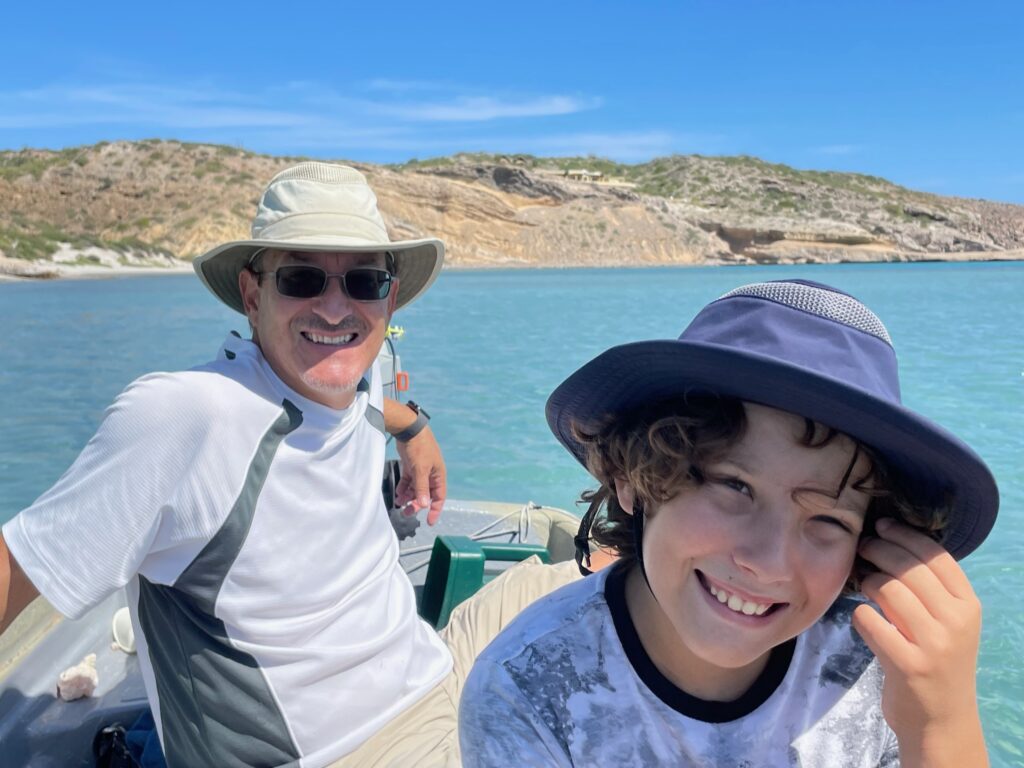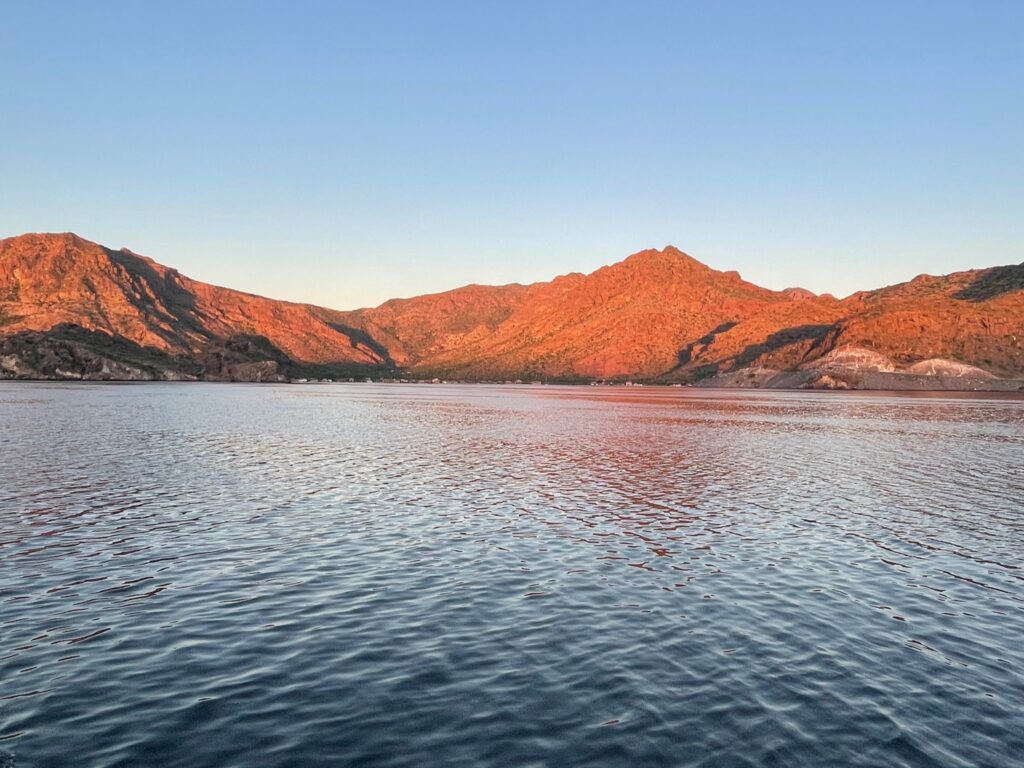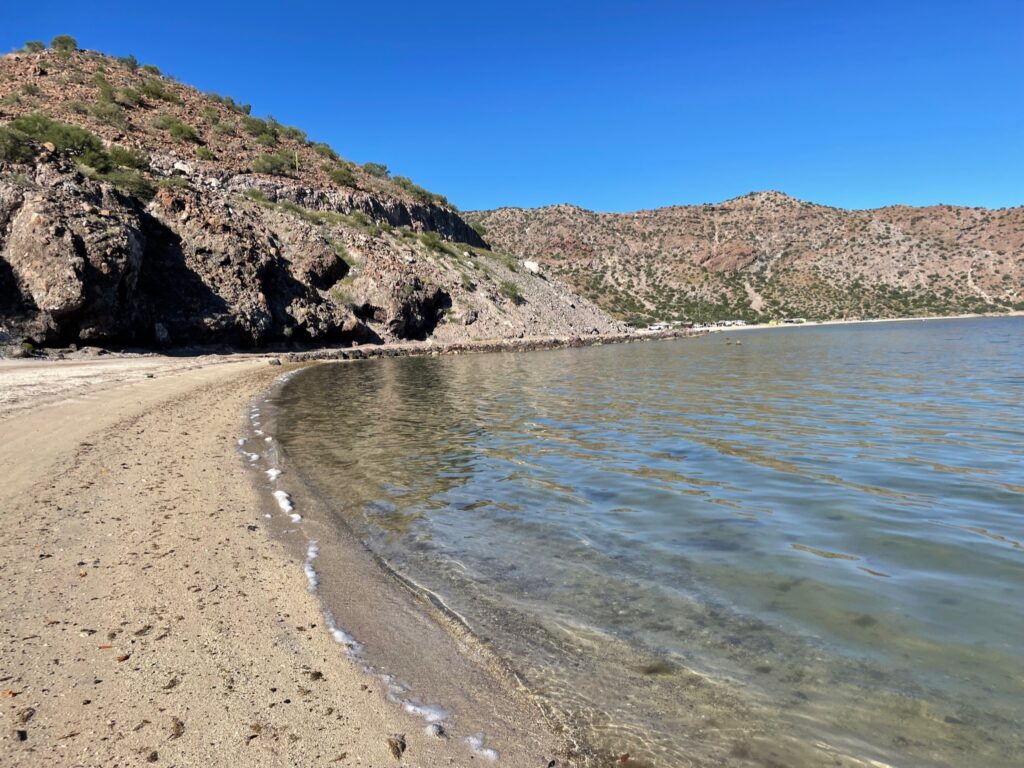Sunrise on Thursday, October 20

In the morning, we did our usual school/chores routine. In the afternoon, we took a dinghy ride to scope out the area.


Sunrise on Thursday, October 20

In the morning, we did our usual school/chores routine. In the afternoon, we took a dinghy ride to scope out the area.

On Wednesday, October 19, at 0730, we pulled up anchor and headed north. As the sun was rising on the west side of the cove, the east side glowed in the early morning light.

Once we reached the mouth Bahia Concepcion, we rounded the corner into the Sea of Cortez, and headed south. The seas were calm. Overall it was a smooth and pleasant trip.
Continue readingOn Sunday, October 16, Christi was feeling back to normal. Eric and Keith were not. Christi stayed onboard and cooked for most of the day. After lunch, Eric and Keith went to shore for the playdate with the family. They played Risk and swam. The water was still very green, so snorkeling was still off the table for us.
Eric and Keith went back to Kosmos for dinner. After dinner, the three of us went to shore for another quick visit with the family. Here is a sunset photo

We keep forgetting to mention that there is a bug here that floats on the water. The cove is full of them at night, and the fish go crazy gobbling them up.
On Monday, Eric and Keith still weren’t feeling good. We didn’t venture out until dinner time, and it was only to go to Ana’s to eat. Does anyone know what kind of bird these are? We are not sure if they are buzzards or vultures or another scavenger, and we’ve seen them frequently in Baja.

Sunrise on Saturday, October 15

Unfortunately, we weren’t feeling any better. Our not feeling good may have been exacerbated by the fact that it was very pitchy and uncomfortable all morning. In good news, the wind began to die down and shift direction in the early afternoon, and by late afternoon, it was calm and pleasant in the anchorage again. Needless to say, with the rough conditions, we weren’t able to go out until the early evening. We went over to the lagoon, which was a little southeast of Armando’s. We landed on the strip of beach that separates the lagoon from the cove. Looking northwest towards the campground.
